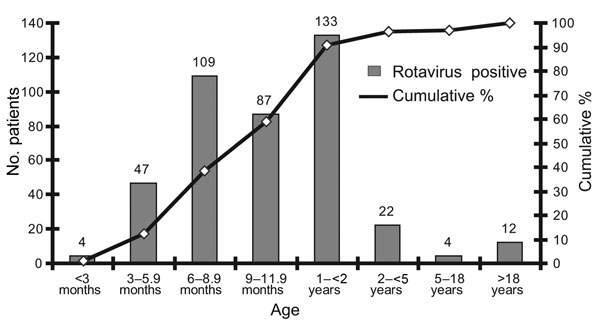Volume 13, Number 1—January 2007
Dispatch
Human Subcutaneous Dirofilariasis, Russia
Figure 1

Figure 1. A) Histologic analysis of skin nodules caused by human subcutaneous dirofilariasis. Cross-sections of Dirofilaria repens surrounded by an inflammatory granuloma. Note the uteri with developing embryos (hematoxylin and eosin stain, original magnification 10×). B) Analysis of patient samples by agarose gel electrophoresis. Lane 1, 100-bp DNA molecular mass weight marker; lane 2, negative control; lane 3, positive control; lane 4, patient sample showing banding pattern typical of the positive control and similar to the banding pattern described in the original protocol (7).
References
- Pampiglione S, Rivasi F. Human dirofilariasis due to Dirofilaria (Nochtiella) repens: an update of world literature from 1995 to 2000.Parassitologia. 2000;42:231–54.PubMedGoogle Scholar
- Pampiglione S, Rivasi F, Angeli G, Boldorini R, Incensati RM, Pastormerlo M, Dirofilariasis due to Dirofilaria in Italy, an emergent zoonosis: report of 60 new cases.Histopathology. 2001;38:344–54. DOIPubMedGoogle Scholar
- Bronshtein AM, Supriaga VG, Stavrovskii BI, Sabgaida TP, Luchshev VI, Korotkova GI, Human dirofilariasis in the Moscow region.Med Parazitol (Mosk). 2003;3:51–6.PubMedGoogle Scholar
- Tsung SH, Liu CC. Human pulmonary dirofilariasis in Taiwan.J Formos Med Assoc. 2003;102:42–5.PubMedGoogle Scholar
- Raccurt CP. Dirofilariasis, an emerging and underestimated zoonoses in France.Med Trop (Mars). 1999;59:389–400.PubMedGoogle Scholar
- Favia G, Lanfrancotti A, Della Torre A, Cancrini G, Coluzzi M. Polymerase chain reaction-identification of Dirofilaria rerpens and Dirofilaria immitis.Parasitology. 1996;113:567–71.PubMedGoogle Scholar
- Simon F, Prieto G, Morchon R, Bazzocchi C, Bandi C, Genchi C. Immunoglobulin G antibodies against the endosymbionts of filarial nematodes (Wolbachia) in patients with pulmonary dirofilariasis.Clin Diagn Lab Immunol. 2003;10:180–1. DOIPubMedGoogle Scholar
- Prieto G, Cancrini G, Muro A, Genchi C, Simon F. Seroepidemiology of Dirofilaria immitis and Dirofilaria repens in humans from three areas of southern Europe.Res Rev Parasitol.2000;60:95–8.
- Gutierrez Y. Diagnostic featrures of zoonotic filariae in tissue sections.Hum Pathol. 1984;15:514–25. DOIPubMedGoogle Scholar
- Rossi L, Pollono F, Meneguz PG, Gribaudo L, Balbo T. An epidemiological study of canine dirofilariosis in north-west Italy: What has changed in 25 years?Vet Res Commun. 1996;20:308–15. DOIPubMedGoogle Scholar
- Martin P, Lefebvre M. Malaria and climate sensitivity of malaria potential transmission to climate.Ambio. 1995;24:200–7.
Page created: June 28, 2010
Page updated: June 28, 2010
Page reviewed: June 28, 2010
The conclusions, findings, and opinions expressed by authors contributing to this journal do not necessarily reflect the official position of the U.S. Department of Health and Human Services, the Public Health Service, the Centers for Disease Control and Prevention, or the authors' affiliated institutions. Use of trade names is for identification only and does not imply endorsement by any of the groups named above.